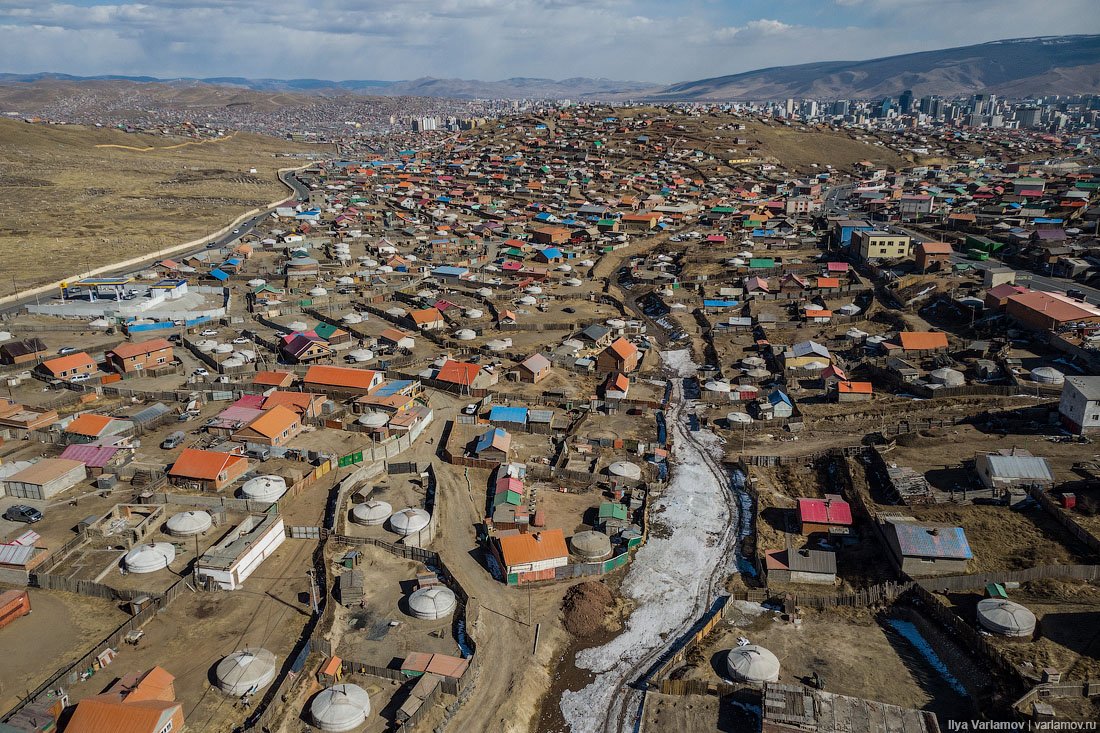
I just spent an hour looking at yurts of #Mongolia. See those white round dots on the map? These are yurts; #nomadic houses. Except now they're used as cheap dwellings on the outskirts of towns: an empty piece of land, a fence, and a #yurt. How does it feel, living there? 🧵1/7 





Sometimes a yurt (aka a "#ger") is the only house on a land plot; sometimes it's more like a second room, to accompany a more stationary house. But these landscapes; these districts look so alien! How do people live there? How come they don't have windows? 2/7 





I mean, it's one thing when yurts are used by actual #nomads (as they were used traditionally), or when people put them up in the summer to escape from a city, or to hide from the virus. But whole suburbs of gers on the outskirts of every town is something different! 3/7 





It turns out that, not surprisingly, gers are so popular as they are pretty cheap; about $500 for the whole thing. Wooden structure, lots of ropes, fabric, wool for warmth, and a stove in the middle. 4/7 





Here's a yurt store; you can pick all the parts, and then, apparently, assemble it yourself? Like a giant lego! That's pretty amazing, isn't it? 5/7
Source:
varlamov.ru/3421903.html


Source:
varlamov.ru/3421903.html



Another amazing thing is that culturally there's a striking difference in how people treat the outside and the inside of a yurt. If you google for yurt pics, you mostly get Airbnb hipster stuff, retreats, and whatnot. But with ggl translate, you can find actual interiors! 6/7 





And see, even poorest yurts are not that bad! No privacy of course, just one round room, but it looks almost... cozy?
Anyways. I'm not sure why I spend so much time leafing through these pictures... Some isolation-triggered wanderlust, I guess :)
(fin)


Anyways. I'm not sure why I spend so much time leafing through these pictures... Some isolation-triggered wanderlust, I guess :)
(fin)



• • •
Missing some Tweet in this thread? You can try to
force a refresh


